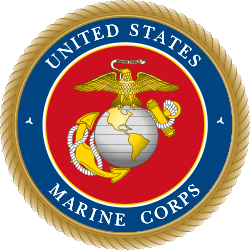
The Rifleman's Creed (also known as My Rifle and The Creed of the United States Marine) is a part of basic United States Marine Corps doctrine. Major General William H. Rupertus wrote it during World War II following the attack on Pearl Harbor between late 1941 and early 1942, but its first publication was in San Diego in the Marine Corps Chevron on March 14, 1942. His reasoning for writing the Creed is believed to be that he felt that his men had to understand the concept "that the only weapon which stands between them and Death is the rifle...they must understand that their rifle is their life..." [1]
Contents
In the past, all enlisted Marines would learn the Creed at recruit training. However, in recent years the Creed has been relegated to the back pages of the standard recruit training guide book, and its memorization is no longer considered required for recruits, but its significance is passed through drill instructors to their recruits throughout each cycle. Different, more concise versions of the Creed have developed since its early days, but those closest to the original version remain the most widely accepted. [2]

